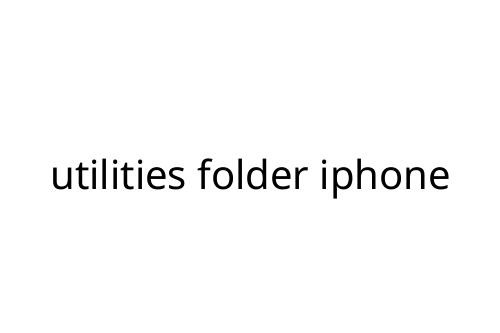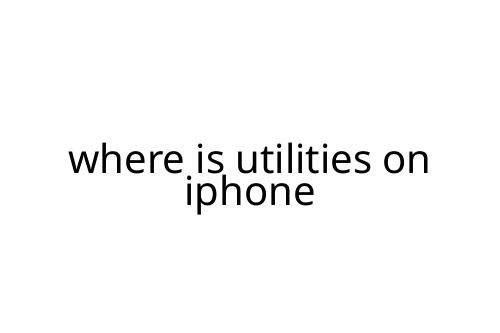utilities folder iphone
If you’ve spent much time exploring the Home Screen on your iPhone, you’ve likely noticed the “utilities folder iphone” — or perhaps wondered what to do with it. For some, it’s a default folder that comes pre-installed on new devices. For others, it’s a handy way to corral useful but not frequently accessed apps. Either way, understanding the utilities folder can streamline your smartphone use.
What Is the Utilities Folder on iPhone?
The utilities folder on iPhone is a built-in folder, typically labeled simply as “Utilities.” Apple uses it to group essential system tools that don’t need to clutter up your main screens. By default, apps like Voice Memos, Compass, Measure, and Calculator are placed here. You might also find Stocks or Find My depending on your iOS version.
Why Use a Utilities Folder?
The main reason is organization. The utilities folder helps you keep lesser-used, system-critical apps in one place. Instead of scattering single-feature tools across several pages, the folder makes them easy to find when you need them — but keeps them out of the way when you don’t.
Some prefer to customize or even expand their utilities folder with third-party apps—flight trackers, QR code readers, or storage analyzers, for example. Grouping similar tools together can minimize clutter and simplify navigation, especially if you like a minimalist Home Screen.
Pros of the Utilities Folder
- Efficiency: Quick access to tools you don’t need daily but want close at hand—like the Compass when hiking, or Voice Memos in meetings.
- Customization: You’re free to move or rename the folder, add or remove apps, or create multiple folders for different workflows.
- Improved Focus: Reduces Home Screen visual clutter, which can make important apps more prominent and save you scrolling time.
Cons to Consider
- Out of Sight, Out of Mind: Too much tidying means you might forget some tools exist. Sometimes, users overlook built-in features (like the Measure app’s digital level) because they're buried in a folder.
- Learning Curve: New iPhone users might miss the folder’s purpose or accidentally delete it. Luckily, you can always recreate it.
Customization Tips
- Renaming is simple. Hold the folder until it wiggles, tap the folder name, and change it to something more descriptive—“Essentials” or “Tools,” for example.
- Drag additional utility or productivity apps into the folder for more robust organization. Just hold an app and drop it inside.
- Don’t hesitate to rearrange: Move your most-used apps to the first page inside the folder for even quicker access.
Key Takeaway
While the default utilities folder iPhone offers is straightforward, it’s also flexible. Use it as intended for Apple’s system tools, or personalize it to match your own workflow. A tidy Home Screen isn’t just about aesthetics—it can genuinely make the iPhone more efficient to use.
In the end, the utilities folder is one of those small features that, when used thoughtfully, makes a big difference in how you interact with your device every day.




